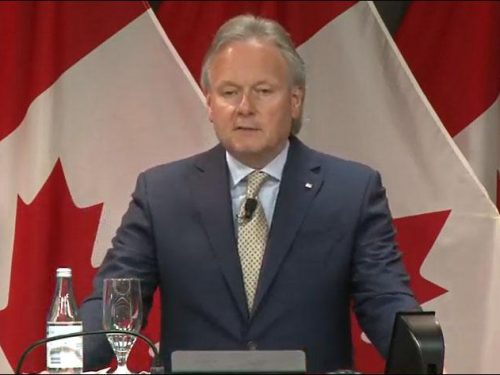Risk management approach will help guide policy through unknowable times, Governor Poloz says
A risk management approach to monetary policy will help guide the Bank of Canada’s actions as the economy goes through extreme uncertainty stemming from the COVID-19 pandemic, Governor Stephen S. Poloz said today.
Delivering the University of Alberta’s 23rd Eric J. Hanson Memorial Lecture, Governor Poloz reviewed how the Bank’s policy decision-making has evolved over the years to better manage uncertainty.
The lessons of risk management will be crucial as the economy recovers from the shock of the pandemic, the Governor said. “The events of this year will be a massive test for everyone’s policy-making ability. We are entering unknowable times, and we will have to be nimble and innovative.”
Governor Poloz explained that understanding and managing risk is crucial for inflation targeting because monetary policy is always subject to uncertainty and much about the economy cannot be known with precision. Risk management “does not mean rejecting the use of models in decision making,” he said. It means “identifying the most important risks and uncertainties around the outlook. We examine the probabilities that the risks will be realized, consider alternative futures related to uncertainties and think about the potential consequences of making a policy error. We then choose a policy course that weighs these risks and uncertainties in order to best manage them.”
This approach includes the use of multiple economic models and “soft data” such as survey results in deliberations. It also includes a number of communications advances to help people understand what the Bank is doing, and why. “We need to communicate our assessment of the events and issues that are influencing our decisions, while being honest about the high level of uncertainty inherent in policy making,” Governor Poloz said.
For much of his tenure, the risks associated with financial vulnerabilities have been particularly important, Governor Poloz said. “The Bank’s inflation target remains the overarching goal—the prime mission of our monetary policy,” the Governor explained. “However, our policy framework does give us flexibility in the time it takes to get inflation back to target, which allows us to make tactical decisions to avoid unintentionally making financial stability concerns worse.”
As the pandemic struck, the Bank took decisive policy actions to support the financial system. “It appears that the approach has worked so far. Financial markets are performing well,” Governor Poloz said. Cutting the Bank’s policy rate to its effective lower bound was also required to give the economy the stimulus it will need to support jobs and growth—and bring inflation back to target—when containment measures are lifted.
The concern with the downside risk to inflation, and the possibility that deflation could emerge, overwhelmed any concern about lower interest rates making financial vulnerabilities worse, Governor Poloz explained. “The downside risks were sufficiently dire that there were no relevant trade-offs for monetary policy-makers to consider,” he said.
Governor Poloz concluded by pointing out the way that economists and policy-makers learn through experience. “This habit of continuously learning will be absolutely essential as we work our way through unknowable times,” he said. “I have every confidence that we will find our way back to prosperity here in Canada, not just because of the strength of our foundations, but in the usual way–through hard work and ingenuity.”

